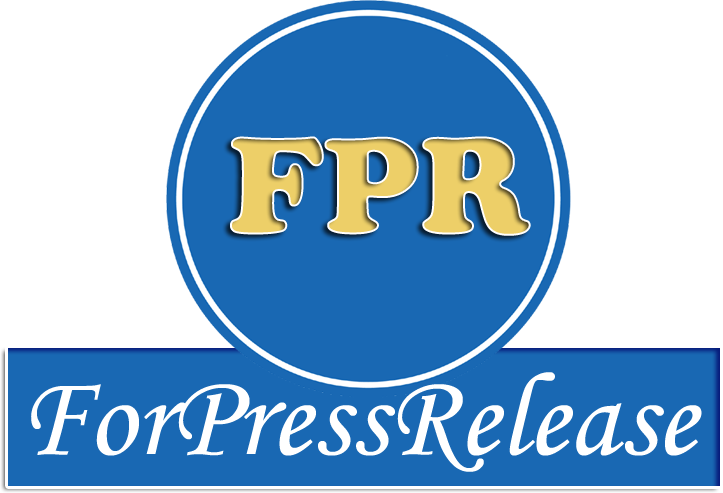- Infographic informs about Chicago Medical Malpractice Lawyer
- Indiatimes 2.0 redefines digital storytelling for modern youth
- Weinberg Law Offices Highlights the Vital Role of a Los Angeles Lawyer in Dog Bite Cases
- Future Electronics Contributes to Reforestation Efforts in Quebec for Earth Day 2024
- The Yoga Institute Announces Free Access to "Samattvam" Yoga OPD in Honor of Dr. Jayadeva Yogendra's Birth Anniversary
- Over 900 Exhibitors to Showcase Food & Beverage Innovation to More Than 27,000 Visitors at JFEX 2024
- Ellen Christman and Nicole Guidi to Launch Discovery Map of Sarasota
- Sennheiser unveils the latest generation flagship earbuds with the launch of MOMENTUM True Wireless 4 in India
- University of Sunderland Delegation Visits Kings Cornerstone International College to Meet Future Transfer Students
- Paintings by Maud Lewis Lead The Way in Miller & Miller's Successful Online Auction Held April 13th
- GD Goenka University Inaugurates State-Of-The-Art Health & Wellness Centre In Association With Park Hospital
- Betachon Freight Auditing Announces Exclusive Discount Ocean Freight Rates with DHL International Shipping
- Nourhan Rabah Bureau Redefines Urban Living in Dubai
- TiDB by PingCAP Leads Data Management Revolution at Great International Developer Summit 2024
- University of Birmingham Dubai invites applications for MSc Computer Science
 Mail to a Friend Mail to a Friend |
|
     |
The Benefits and Disadvantages of Outsourcing Payroll Services
It's difficult to know whether or not to outsource payroll services. While payroll functionality is critical, other considerations such as cost and compliance play a role in the decision-making process. It's critical to comprehend the benefits and drawbacks of outsourcing payroll so that you can make an informed decision.
In-House Payroll VS. Outsourcing.
When a business hires a third-party service provider in Singapore, to manage the administrative and compliance chores related with employee pay, it is known as payroll outsourcing Vietnam. This may involve paying payroll taxes and payments on your behalf, depending on the payroll outsourcing business.
An individual administrator or a team is in charge of in-house payroll. Controlling sensitive corporate data and when paychecks are given are two advantages of in-house payroll processing. However, there are still a few drawbacks to conducting payroll in-house. Payroll problems, erroneous deductions, and noncompliance are all potential hazards.
Outsourcing Payroll Services
When opting on payroll outsourcing services, numerous considerations must be considered, including implementation time and return on investment. Below is a list of potential benefits and drawbacks of outsourcing payroll services that you should think about before making a final decision.
Pro: Time Savings
According to Technology Advice, 26 percent of small firms manually manage payroll for three to five hours each month. A consolidated database for payroll and attendance data is available in several solutions. From time capture through pay-out, this unified method automates the process into a closed-loop procedure. Payroll software does this by using the following methods:
● Employees log in on the payroll system, which causes the hours worked to be automatically recorded.
● Employees request time off using the same system, which combines attendance and time data.
● Automatic calculations replace tedious Excel spreadsheet formulae by transferring data from hours worked multiplied by predetermined pay rates.
● To simplify tax compliance, the results of these calculations are compared to W-4 withholding information.
● Each pay month, an employee receives an appropriate pay check.
You may reclaim significant time in your workday by outsourcing payroll to a supplier. You'll be more productive and have more time to focus on your company's strategic priorities. That enormous to-do list will no longer appear so daunting.
CON: Implementation Time
It may take time to establish a new system, depending on the solutions you seek and whether special development is necessary. It will need cross-departmental coordination to acquire staff data or leadership meetings to assess how soon you can adopt a new system. The good news is that most payroll and human resource suppliers recognize the need for a seamless transition and have created more efficient solutions. Some provide timetables for deployment or more hands-on client interactions.
Costs
Manually processing time-off requests might lead to mistakes. Businesses that conduct payroll in-house, for example, have an average of three unreported PTO days per employee each year. If a company employs 100 people with an average salary of $45,000, that's $36,900 in unpaid vacation time! PTO requests are streamlined using a payroll and HR solution, so days don't go unreported, saving your company thousands of dollars.









